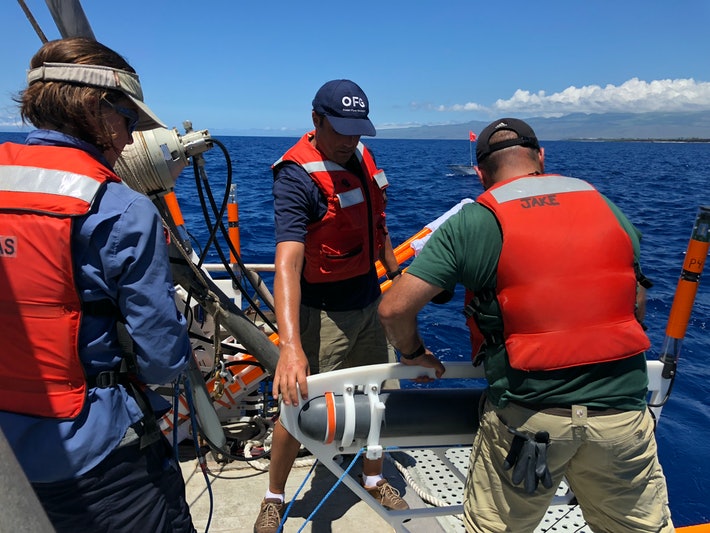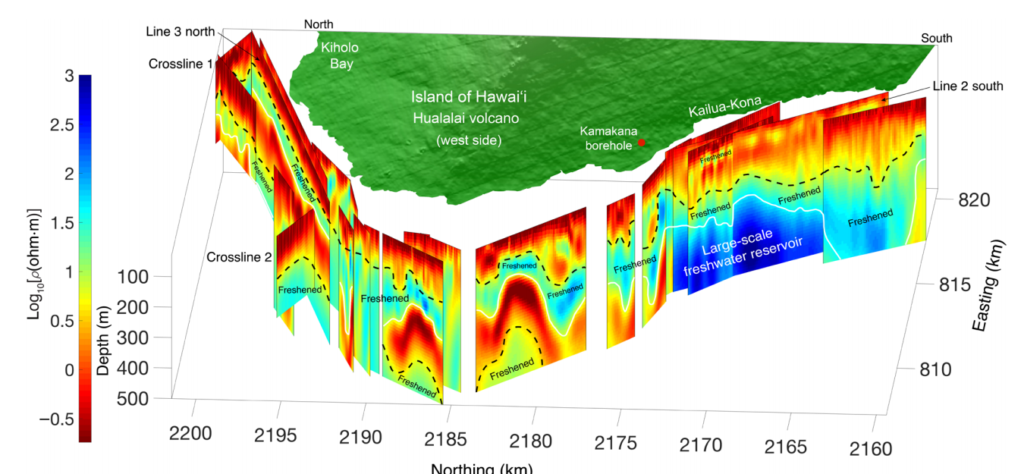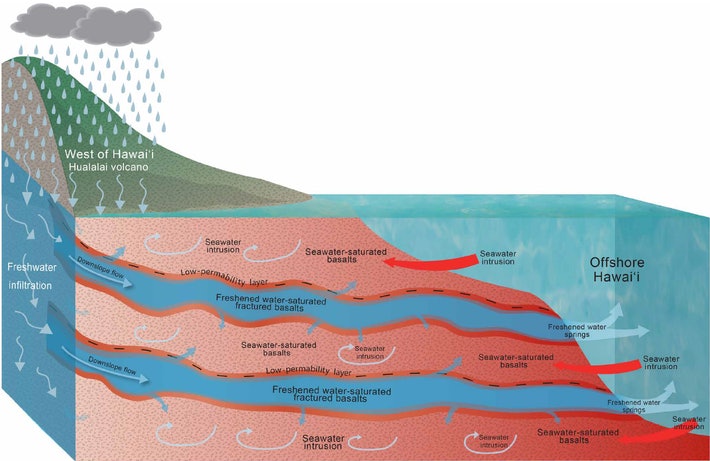Hawai’s’s beautiful geology is both its blessing and its curse. The islands lie on a geological hotspot: an area of hot magma plume rising straight from the mantle, which is also responsible for its volcanic eruptions and stunning landscapes. This is why Hawai’i lies so isolated in the middle of the ocean, far from any other major geological structure.
Nowadays, as tourism is the largest single source of income for Hawai’i’s economy, this is undoubtedly an advantage for inhabitants of the islands. But it’s also a threat, since the islands are so isolated — not just from other cities, but also from other resources, like fresh water.
Most of Hawai’i’s fresh water comes from onshore aquifers, layers of rock and soil that collect rainfall underground. Now, a new team of researchers using geophysical methods has found a new reservoir that could alleviate Hawai’i’s thirst, as well enable geologists to better understand volcanic islands in general.

A cache of unusual water
The study started when researchers analyzed the amount of water collected in the known aquifers. According to their models, there was a big difference between what they expected to see and what was actually visible: the aquifers had 40% less water than expected, or about a trillion gallons. So where could this missing water be?
Geologists typically assume that freshwater resources on volcanic islands are composed of a shallow layer of fresh water floating on seawater. This assumption is generally valid, but it overlooks more peculiar geological structures that could store water. For instance, geological heterogeneities could produce confining layers offshore, which could also store water. So in their search for the missing freshwater, that’s where the researchers thought they should look.
If you’re looking for underwater water — that is, fresh water under the ocean water — you don’t need a shovel or any digging equipment; you only need physics.
Specifically, the researchers used a 40-meter-long antenna towed by a boat. The antenna produced an electromagnetic field, which sent out an electric current through the seawater. Seawater is an excellent conductor of electricity because of all the dissolved salts in it — but freshwater isn’t that good of a conductor, which enables researchers to distinguish between the two, a bit like an MRI.

The surveys suggest a rich abundance of freshwater just offshore of the Island of Hawai’i, flowing like underwater rivers beneath the surface. There are actually two levels of freshwater under the surface, the researchers suspect, hidden in porous basaltic layers.
Here’s a depiction of the structures the researchers propose:

For Hawai’i, this could be godsent. Like many islands, Hawai’i is struggling with water scarcity, which is already becoming worse due to climate change. But the researchers say that the findings could be important for other volcanic islands as well.
“We propose that this newly found transport mechanism of fresh groundwater may be the governing mechanism in other volcanic islands. In such a scenario, volcanic islands worldwide can use these renewable offshore reservoirs, considered more resilient to climate change-driven droughts, as new water resources.”
The idea is compelling, but also requires some validation. Researchers will need to drill through the island to confirm what they’re seeing. If it is confirmed, it could be a way to source freshwater to the island in a relatively easy and ecologically sound way.
The study has been published in Science Advances.



